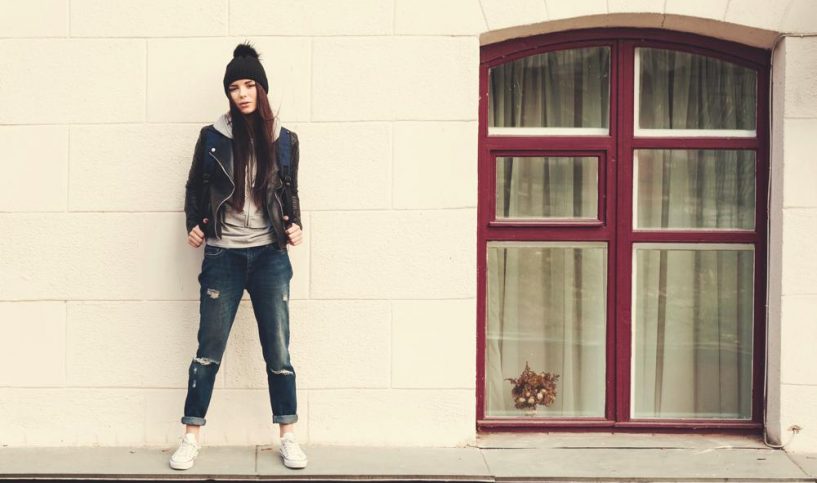by Yasmine Dalloul
Let’s talk about Hipsters. The concept has become so widespread that it’s safe to assume most people know at least one person they would define as a Hipster. What is a Hipster, anyway? Is there really a definition? Some may say a Hipster is somebody who consistently tries too hard to be ironic, while others may insist that Hipsters are a group of pretentious and judgemental tools. In my opinion, both definitions apply, but as a self-proclaimed fashion theorist I have come to gather that Hipsters are the modern day Beatniks of our generation, who actually may have a delicate psychology behind the movement we have come to both covet and mock.
Let us reflect on the past 14 years of fashion; doesn’t it seem like we’ve managed to turn a full circle since the year 2004? Yes, the vintage look and influences from the past were always trendy throughout the 20th century, but up till the return of leggings, most pieces were all new concepts, or concepts that were deemed as classic.
Take the year 2007 as an example: flip through the pages of any Vogue of that year and you’ll find skinny jeans, v-neck cashmere sweaters, cropped jackets, and knee-high boots with jeans tucked in. Neutral tones with vibrant neon detailing. Small glasses were the norm and fashion was just…modern. It didn’t seem like anyone was trying too hard.
About one year later, I had noticed a new movement had taken storm among the generation when I would visit my sister in Montreal. I thought it was bizarre how a lot of her friends had taken up an extremely simple way of living that wasn’t modern or complicated. These people looked as though they had walked out of the scenes of 1980s movies with their skinny jeans, Doc Martens, oversized and ragged knit sweaters, loose toques, and grim facial expressions as they drank from their Mason jars and listened to records in their quaint Plateau apartments when the “normal” and “expected” was to live downtown. I was living in a smaller city at the time and had noticed that none of my friends or any of their friends had felt the need to mimic this lifestyle. It was as though the thought had never occurred to them. Halifax being a much smaller city, had citizens who were more than happy with their five appliances, Uggs paired with Lulu Lemon leggings, and breakfasts at Chez Cora every Sunday.
But the economy was crashing, the political world was going nuts, and there were lots of unsettling theories and conspiracies about our future. Collectively, I’d say with the way it was going down, our generation had the right to be angry with our parents. It makes sense that these kids who we called Hipsters wanted to revolt against their parents’ frivolity that had taken the world through such highs and lows on political and economical levels. What does that mean? Everything old must be new again, and let us save, save, save. Everything that is quaint is fashionable. If it looks like something you would have owned as a child, your mother, father, aunt, or uncle would have owned as a child, and an apartment your grandmother would have lived in when she was your age, it was considered cool. Thriftiness had become a trend, and the thrifty people obviously flocked together with their similar interests.
Personally, I was a little surprised when I’d noticed a couple of years later how Hipster fashion had made it through the pages of Vogue. I had never in a million years expected it to be fashionably acceptable to look like Topanga Lawrence again, or to wear Steve Urkel eyeglasses – even though my personal taste had taken to the look when I had first discovered it. On some level, I find it fishy, how easily we returned to a whole decade that had only just passed. Was it because we were simply bored of the monotonous metallic and neon colors of the futuristic 2000s? Or, were we starting to think like the Hipsters and flock back to what we used to know, before the world was complicated.
The 90’s wardrobe has been the peak of Hipster fashion for the past couple of years. And whenever I wear high-waisted Levi’s shorts, I feel 8 years old again, not worrying about nuclear war or whether or not we are actually living in a 1984 environment. If I feel this way, others must as well – otherwise the trend wouldn’t have taken so strongly.
I really don’t think the movement was intended to define our generation, I feel that the image the Hipster was initially trying to convey was one of simplicity that had spun out of control. But when we think about the concept of everything old being new again, is it possible that we are clinging to the familiar because we are afraid of the future?
It is an interesting concept to think about next time you’re at a quaint cafe where the room is glittered with people dressed in clothes that are inspired by decades throughout the 20th century but everyone is on their smartphones, tablets and personal computers. With that image, I always think: If someone were to teleport themselves from the 1960s, they would be extremely confused. On the other hand, I’m glad we’re not dressed in robot garb yet, and we can have fun with clothes from the decades we had missed out on.








